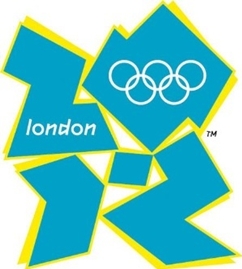The changing faces of public sector brands
There seems to have been a lot more brand and identity change within the public sector over the last few years than perhaps other sectors have experienced. We’re talking the larger organisational level stuff, not just small initiatives.

Large-scale cultural events, such as the London 2012 Olympics, and big political change, such as the election of the Coalition Government, have resulted in brands coming and going on quite a scale. Private sector brands, by contrast, have a greater tendency to endure, with gradual evolution over time being the norm.
In many cases, the people in these public bodies that have undergone brand change or restructuring, and the creative consultancies that support them, stay in place and simply have the baton passed. In this environment, consultancies have had to adapt and re-interpret changing brand identities and messages.
As a creative consultancy we’ve been heavily involved with helping public sector organisations deal with the challenge of change from a design perspective. We’ve found that you may often be communicating to the same audiences, about the same things, but have to do it within a different design system (not to mention a changed brand validation).
The fate of public bodies, during political change, can often be significant and relatively sudden. We’ve worked with various ‘quangos’, including Regional Development Agencies, that either disappeared entirely or were absorbed into other departments.
None of this is helped by a general nervousness among public-sector clients to embrace ‘brand’, while not necessarily understanding its value in quite the same way others sectors do. This can be due to a number of reasons: the constraints of shorter-term horizons, budget squeeze or perhaps because it’s viewed as a non-essential use of funding. The more enlightened, however, understand the value of the story.
The development of the SA1 Swansea Waterfront brand was a project we were involved in when the Welsh Development Agency was absorbed into the Welsh Assembly Government. This inevitably led to design adaptation, but the central story of SA1LIFE – turning a lifeless area into one full of life – was something we kept consistent. SA1 was both place name and postcode, so it transcended language barriers, and design ones too. Image and typestyle could evolve, but the identity system was built on SA1 preceding inspirational messages – LIVE WORK CREATE ESCAPE – using these words as ‘windows’ through which images could reflect and support the story.
Some might not regard any of these as ‘brands’ as such, but they do have the need to develop identities in order to engage their audiences and build that all important trust.
For public sector brands trust is crucial, perhaps even more so than in the private sector. There, brands generally understand the value of building brand equity to avoid disruptive change and evolve over time in a consistent way.
With brands like these, with deep-rooted values, it’s far easier to build a voice, but in the public sector you cannot always dig down into that heritage.
The crux of it is to help these clients tell their story. We’re all familiar with the idea of the ‘brand story’, but in the public sector it’s crucial. Visual identity may change, but the story often carries on, and it can be an important one, where there’s a responsibility to communicate with clarity and inspiration to win over cynical audiences.
Sometimes the pace of this means that the deeper elements of a brand identity: core values, tone-of-voice etc. haven’t always been fully established.

London 2012 is a great example; there was a transition from post-bid ‘non’ brand, into the Wolff Olins-developed London 2012 identity we’re all familiar with. Again, looks changed, but what was said didn’t – it was a continuation of an exciting story.
The next issue faced was the change of name and identity after the Games finished: from Olympic Park Legacy Company to London Legacy Development Corporation and the Queen Elizabeth Olympic Park brand, all over a relatively short time period. From a design standpoint this meant adapting their approach but their legacy and the story stayed the same.
So, whether creating a brochure to communicate sponsorship opportunities to global brand managers, inspiring the workforce with a staff magazine, or community engagement materials and wayfinding. It is the story (not just the design) for this new area of London and its vibrant community, that should be a consistent one and ‘unlike any other’.
Ultimately, as creatives/designers, we need to support clients in the public sector to see that the trust benefits in building the brand story even when change is unavoidable. It’s about seeing ourselves as design ‘communicators’ and taking responsibility for what design is ‘saying’ to people.
Paul Turner is creative strategy and planning director at Embrace
-
Post a comment




